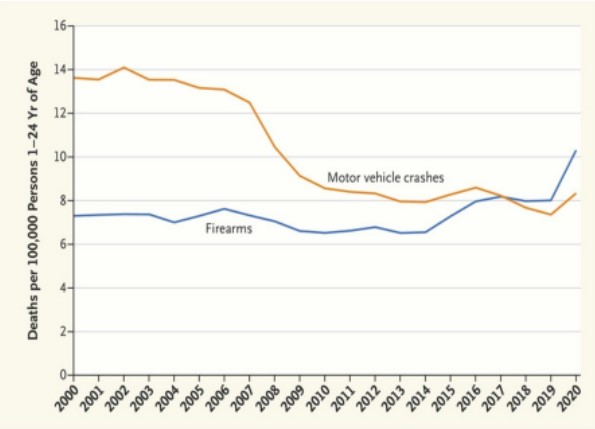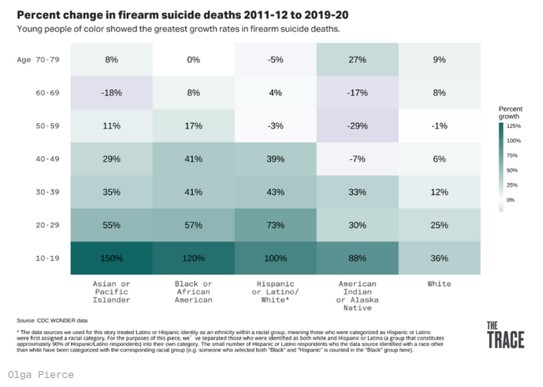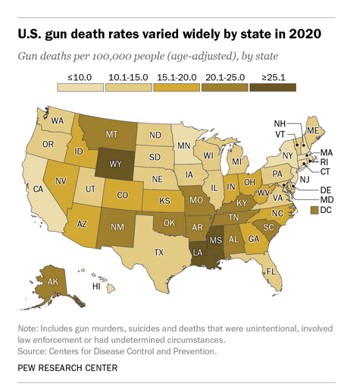Gun Violence Across the Generations and Its Impact on Survivors and Families Several news reports this year highlight not only continued incidents of gun violence, but specific impacts on different demographic populations. We share some of these reports below. In a first, firearms were leading cause of death for U.S. children and teens in 2020
NBC News shares data from the Centers for Disease Control and Prevention (CDC) indicating that since 2017, the leading cause of death for those between 1 and 19 years of age is firearms. Prior to that, vehicle crashes were the number one cause of deaths in that age group. Also worthy of note is a related report in the New England Journal of Medicine which compares licensing of drivers and motor vehicles to licensing of firearms and background checks.
“Many states have made it easier for children and young adults, as well as adults with criminal records, to gain access to firearms. Some states don’t require background checks when firearms are purchased from private sellers, such as at gun shows. In recent years, many of the same states have passed legislation allowing people to carry a concealed weapon without a permit.”  Mortality from Motor Vehicle Crashes and Firearms among Children, Adolescents, and Young Adults, United States, 2000-2020. Source: CDC Youth Gun Suicide Is Rising, Particularly Among Children of Color
This report by The Trace, also citing CDC data, shares the following: An American teenager took their life with a firearm every seven hours on average between 2019 and 2020. A CDC spokesperson said that suicide reduction “includes reducing access to lethal means such as firearms and medications among people at risk. Safe storage of lethal means has been shown to reduce youth suicide attempts."  What the data says about gun deaths in the U.S.
A recent report of the Pew Research Center states not only that the highest number of gun deaths in the U.S. occurred in 2020, but the year also saw a 34% increase in gun murders over 2019. In addition, 54% of gun related deaths in 2020 were suicides. This report further states:
“Nearly eight-in-ten (79%) U.S. murders in 2020 – 19,384 out of 24,576 – involved a firearm. That marked the highest percentage since at least 1968, the earliest year for which the CDC has online records.”  Gun Violence Wreaks Havoc on Lives of Survivors, Their Families
An article in U.S. News & World Report explored the increased mental health and economic impacts on survivors of gun violence and their families. According to this report (based on a study by Harvard University), there are an estimated 85,000 survivors of gun violence each year and they and their families face significant issues, such as: - A 40% rise in pain diagnoses, a 51% rise in mental health conditions, and an 85% increase in substance use disorder
- Family members of gunshot survivors had a 12% increase in mental health conditions such as depression, anxiety and post-traumatic stress disorder
- Survivors face nearly $2,500 in additional healthcare expenses monthly in the year after their injury
How can we reduce the firearm death toll in older adults?
A study by the University of Michigan explores the science behind measures to reduce the potential for injuries and deaths from firearms among people over 50. University experts share their findings and three key areas for potential risk reduction through both public policy and personal action: - Increase locked storage
- Focus on older adults with dementia, depression or other major health concerns
- Train health providers in firearm counseling for older patients
 The information and statistics above are compelling – but what is also compelling is that problem of gun violence across our state and country continues to be very real. So, let’s all keep working together to stop the violence! |